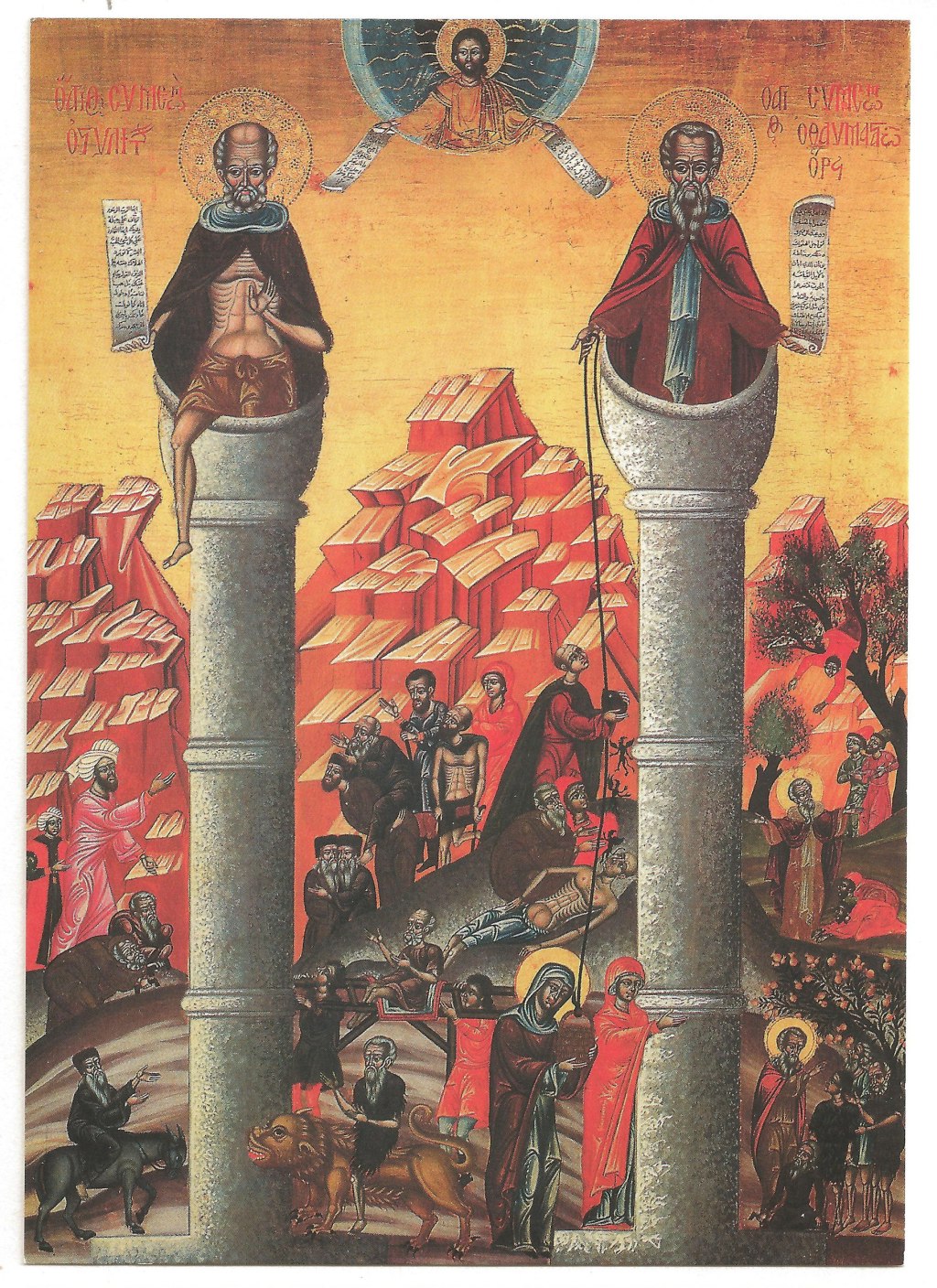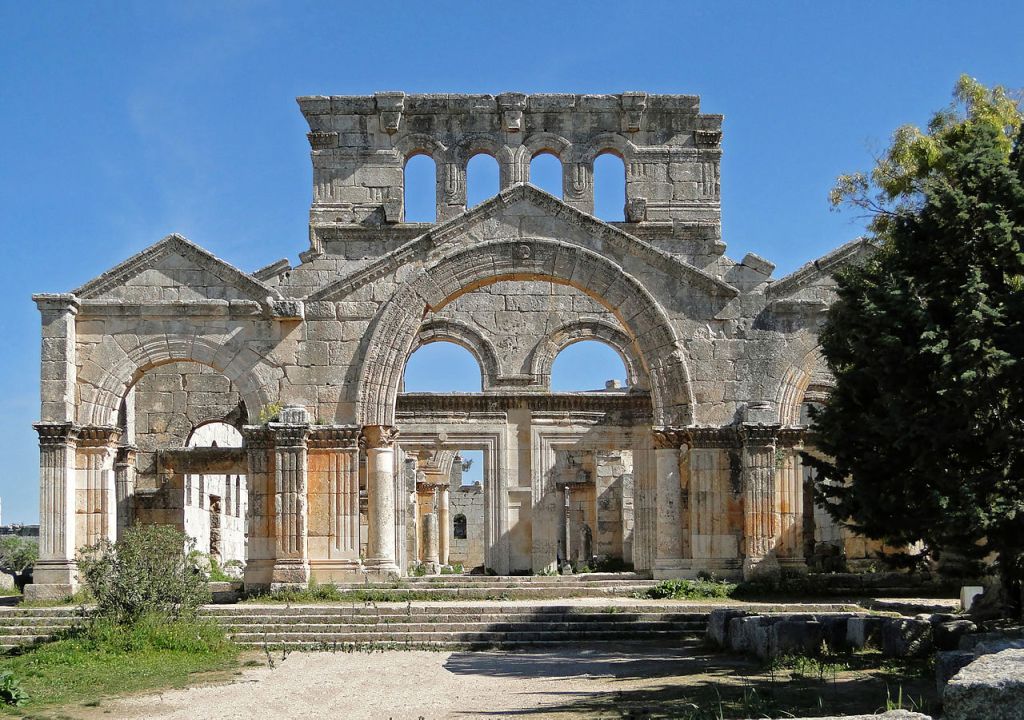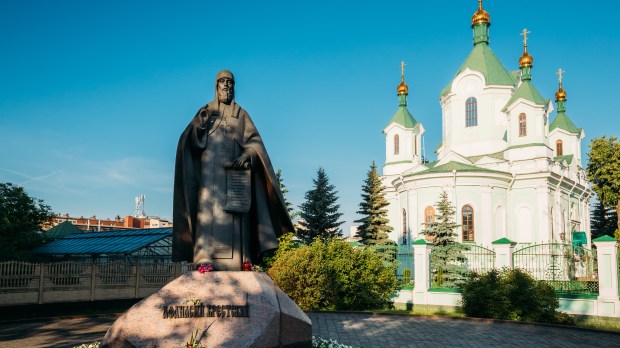The term stylite derives from the Greek “stylos,” meaning pillar. It refers to a very specific kind of ascetic Christian monkwho decided to live on top of a pillar (or a column, or its equivalent) for extended periods of time – seeking solitude and silence, but also as a form of penance. This unique (and rather rigorous) practice emerged in the early Christian centuries, particularly in the Byzantine Empire.

One of the most renowned stylites was St. Simeon Stylites the Elder, who lived in the 5th century. Simeon’s ascetic journey began when he isolated himself in a small hut, but later he decided to live on top of a pillar to distance himself even further from worldly distractions. His pillar (which gradually increased in height over time) became a symbol of his dedication to a life of prayer and contemplation. Simeon’s asceticism and his endurance atop the pillar for nearly four decades attracted many followers and pilgrims who sought his guidance and blessings. Today, the remains of a byzantine church built around his column are witness to the ecclesial lifestyle he somewhat inaugurated.

St. Daniel the Stylite, a contemporary of Simeon, followed a similar path and lived on a pillar for over 30 years. St. Alypius the Stylite, another prominent figure, spent 53 years on a column. These saints, and others like them, viewed their isolation as a means of keeping themselves “unstained by the world,” as recommended in the letter of James (Cf. James 1, 27).
The theological significance of stylitism lies in its embodiment of the monastic ideal of hesychia – a Greek word meaning stillness but also silence. By voluntarily withdrawing from society and living on top of a pillar, the stylites sought to detach themselves from distraction and achieve a state of unceasing prayer.



